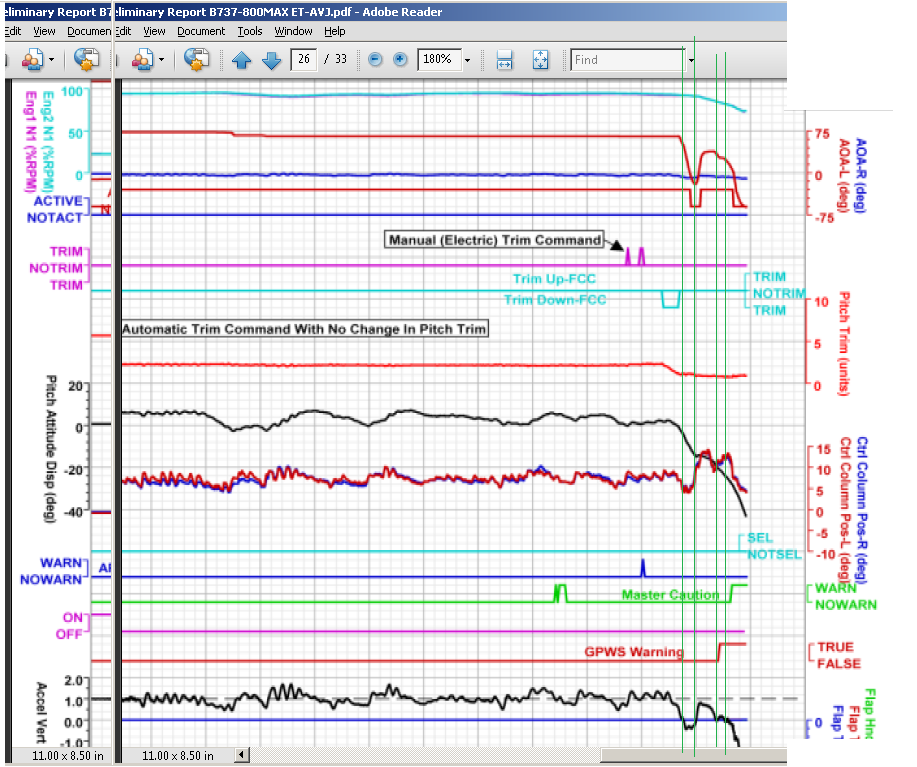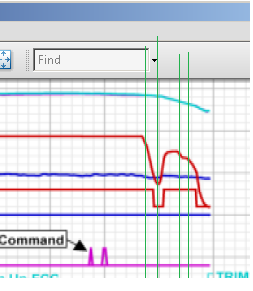Originally Posted by
rog747
Thanks Bendalot --- I too was puzzled by this bird strike story...
The bird strike theory may be all my fault?
I proposed a failure mechanism in post
Ethiopian airliner down in Africa
#3238
" It therefore seems quite likely that the vane was lost or perhaps damaged soon after take off, perhaps by a bird strike or otherwise."
The AoA sensor is I assume balanced so that with no airflow it will hold whatever position it is left at. The Preliminary report has FDR data that includes the Left AoA and the Vertical Acceleration (g). The sign of the AoA (+/-) and the sign of the vertical acceleration track each other exactly.
This suggests to me that the sensor rotor assembly has become unbalanced. The direction of the imbalance if the vane (which is to the rear of the axis) is lost would allow the shaft to rotate such that the vane, if it was still there, would move UP if +g (straight and level).
Up vane relative to the fuselage is +ve AoA.
I am sure that the investigators will also have noticed this correlation, so hopefully it is nothing to do with me.
There seems strong evidence that the vane was lost soon after take off. The mechanism of the loss is unknown and since the sensor was at the business end of a very fast crash it may well never be known. Finding the vane would be a good start though.
Left side AoA sensor vs vertical acceleration (g)I offer an explanation for the behaviour of the Left hand AoA indication throughout the flight.
If the vane had been lost the AoA sensor would become unbalanced about its usual axis of rotation. The internal balance weight** would then cause the axle to be subject to movement when the aircraft transitioned from +g to -g. +g would cause the indication of +AoA. (If I have got this the right way round

Looking at the FDR traces it can be seen that this appears to be the case. I have drawn
four green vertical lines to indicate the transitions from +g to -g and vice versa. In each case they appear to align with a change in the direction of movement of the sensor in the correct sense. Remember that the data consists of discrete samples and we do not know the sample rate and I am assuming that any small discrepancies are due to errors introduced by the sampling.
I have (rather crudely) chopped out a period in the middle of the chart so that it is a bit narrower so that the scale markings can be easily seen. The horizontal blue line in the "g" section of the chart is coincidentally exactly on 0g.
It therefore seems quite likely that the vane was lost or perhaps damaged soon after take off, perhaps by a bird strike or otherwise. Note however that if the vane had been bent back its balance would be moved in the other direction and its aerodynamic influences would still have been felt so I think that the best conclusion consistent with the data is that the vane was lost.
** A post on PPRuNe regarding this incident showed an exploded view of the AoA sensor and it featured an internal balance weight. Unfortunately I cannot recall where it was now.

